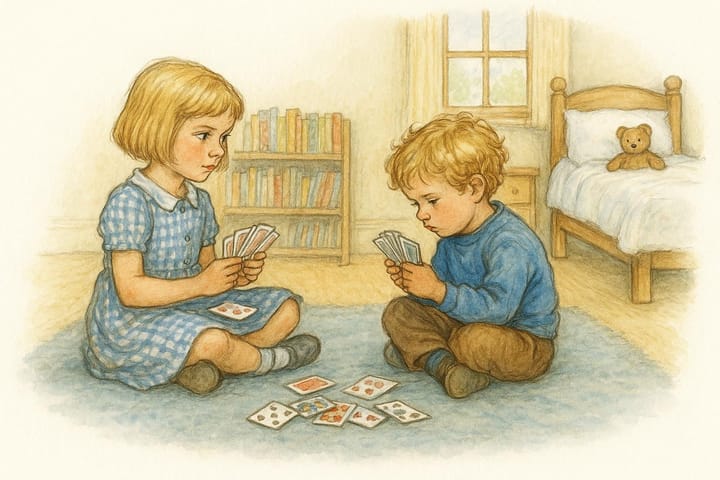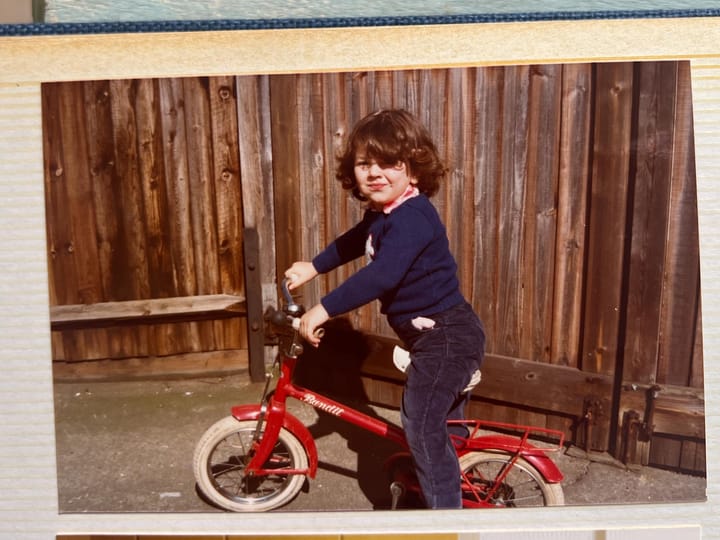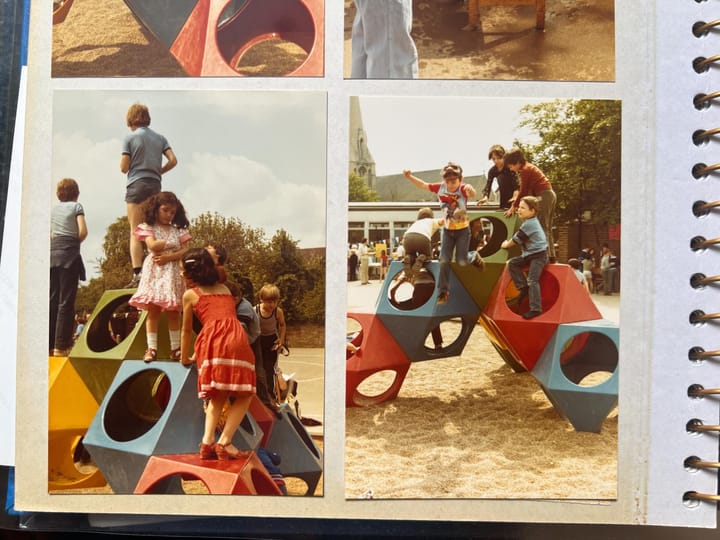Introducing Screen-Free Saturdays

I’m a hypocrite.
As I write this, my children are on screens. Which is ironic because my new project is about going screen-free.
I had the best of intentions. But sometimes you have to bend in order not to break. One of the four is having a meltdown. My second son is revising for a test. I have an important deadline: this email.
The house must be quiet.
I could stick to my principles, take a break, calm everyone down and start a fun activity for all to enjoy.
And I could do it.
I know how.
But this is an emergency and I don’t have the time.
That doesn’t mean I have to like it.
I know screens are a reality. They are increasingly part of life now for most children.
I don’t have to tell you they’re bad. You know about the dopamine high they induce and the crash and fury they provoke when taken away.
Screen-Free Saturdays is about fewer screens, not none at all.
It’s about keeping screens for emergencies and the occasional down time at the end of a busy day.
I’d love to get rid of them completely but that’s not realistic.
A wasted childhood
In his book, The Anxious Generation, Jonathan Haidt quotes research showing children spend 4 - 6 hours a day on screens.
4 - 6 hours a day!
That’s 70% of a child’s waking hours, after school and other non-negotiable activities like meals and travel.
What’s left for play?
And research has shown us that play is vital for development.
Think back to your own childhood. I don’t know about you but I spent hours playing outside. In the summer I didn’t come in until it got dark. As a nine-year-old I was allowed to ride my bicycle down the road to visit friends. We used to hang out and do all kinds of silly - and probably quite dangerous things. On rainy days, stuck at home, I had access to the tools in the garage. I made a new windowsill for my bedroom from an old piece of wood. I learnt to repair tyres. My mother showed me how to bake bread. I made a loaf in the shape of a bunch of grapes. I can still remember the hot, yeasty, lip-scorching steam that escaped as I broke it open to take that first, delicious bite.
I even played with my sister, my sworn enemy, if things got really desperate!
If I could have my childhood again, would I give up 70% of that time, of those memories and rich experiences?
Would you?
Why would it be any different for your child?
If she knew what she was missing, what choice would she make?
100 good things
I tried this with my ten-year-old. I told him about all the fun I had as a child.
Would you give up screens if you were allowed to do the things I could do.
He answered without hesitating.
So we made up a list of 100 things he would like to do if he had more independence, from putting bread in the toaster by himself, to walking to the shops alone, to riding a bus and visiting friends. We put them in order of difficulty (and safety), and started with a slice of honey on toast. Now he walks to the end of the road to collect our Friday night pizza. Over the weeks and months we’ll get through that list, as his confidence - and ours - grows.
NOTE: we explore this idea in more detail in one of the first Screen-Free Saturdays newsletters.
I know things are different now. We worry more about our children’s safety (and some of that is a good thing, but some not). We are more involved in their lives.
But there’s a space between the battery hen existence of a child on screens and the probably-too-dangerous freedom many of us enjoyed as children. That space is where Screen-Free Saturdays lives.
Start with just one day
I have an idealistic streak, which I have to rein in. I love the idea of banning screens altogether. I know how good it would be.
But no child is an island. They have friends. They talk in the playground. Have you seen this? Did you play that? Come to my house for a playdate and we can do it together.
But even just one day a week would make a huge difference, wouldn’t it?. It shows your child that there is another world out there, a world where she is in charge, where she can make her own fun.
She learns that she has control over her life, that she has the power to change things, to make things happen.
The secret
So what’s the formula? How does Screen-Free Saturdays work?
If you’re been following me for a while now, you’ll know that I’m not a fan of activities. They’re adult-led and so time-consuming to set up.
Worst of all, they are hit-and-miss. You might come up with a great one - or all your efforts could be wasted.
There has to be a better way. And there is:
You need interests, not one-off activities.
Screen-Free Saturdays is about helping your child to find something she drawn to, a baton she can take up and run with.
Look for themes, for broad categories. Encourage your child to poke around and look for threads to pull at.
For my second son, it was a poster he made at school for a non-alcoholic cocktail. He loves anything sour, so he called it SourStrike.
What’s in the drink? I asked him.
I bet you could make it. You know, sour drinks just have a lemon and sugar base. You could try a few combinations and see which one you like.
So he researched ingredients and made a list. We walked to the shops and came back with a bulging bag of juices, limes and lemons.
He made a grid:
Ingredient 1 | Ingredient 2 | Score | Comment
- Sour mix + Cherry soda, 9/10, “Amazing! Sweet and sour and cherryish!
- Sour mix + Orange juice, 7/10 “Zingy!”
- And so on.
Over the years, he has watched me build 100 Toys, Get Set Five, A Year With My Child and now Play with Purpose. Last Christmas he asked for the Usborne Big Subjects for Beginners boxed set. He learnt all about business.
And from there he got the idea of starting a lemonade stand.
But then, a lightbulb moment: he doesn’t want to sell lemonade. The project has become real. He’s selling SourStrike.
I prompted him with Socratic questioning (sounds pretentious; works great). Each question was met with another one. He knows not to ask me for a straight answer. He won’t get one.
More questions followed. This time they all came from him. - How much can I sell it for? - How much profit will I make? - Am I allowed to sell on the street? - How can I get it into bottles? - How can I make the labels? - How will people find out about it? - Can I sell it on a website, like yours?
And so Sourstrike.com was born. It’s a work in progress. Check back over the coming weeks and watch it take shape. He has drawn pictures, made recipe cards and planned the copy.
He has so many questions - and he didn’t go near a screen all weekend.
I have four children and I work from home. I don’t have the time (or, quite honestly, the inclination) to sit with him all the time while he works on it. All he needed was the seed of an idea and a little encouragement from me to get started.
I can’t tell you what your child will be interested in.
But I can help you find out.
And maybe we’ll end up with a little less screen time thrown into the bargain.
Screen-Free Saturdays and The Play Tools
The Play Tools sit at the heart of the Play with Purpose project.
One of the reasons I’m so reluctant to suggest elaborate activities is that you are training your child to depend on outside forces for entertainment, whether that’s you, screens or pinching a sibling to see what happens.
Whenever she feels bored, she’ll come to you (or start a fight…).
So what's the answer?
“Go away and find something to do.” It’s a phrase my children hear all the time. I’m gentle about it, but they know I mean it.
And it works.
But it only works because of The Play Tools. Over the years, my children have developed a degree of resilience that only really comes from knowing that the buck stops with them. They still bicker. And they complain all the time. But, in the end, they know that they have the mental tools to handle what life throws at them.
The Play Tools are quick (taking just a few seconds, and certainly no more than a minute) actions you or your child can take to refocus and get back to play. Over time, they become internalised and habitual.
My sister’s angry. I know how to handle it. I can get on with my game.
I spilt paint all over my work. It’s ruined. But that’s OK. I can make another one.
It’s noisy in here. I notice that it’s making me agitated. I’ll go play in another room.
Of course, children don’t develop such maturity through direct instruction. The Play Tools are short games or actions to perform whenever something goes wrong. You start by playing them with your child but over time she learns to notice situations where they might help and starts to apply them herself.
And slowly, almost imperceptibly, things get better.
Can you see how screen-free fun depends on this kind of self-control and self-knowledge?
Children need the power to make their own fun - but also to resist temptation and distraction.
It’s not enough to start a screen-free activity, you have to stick to it.
Breaking the screen-time habit
Reducing - or removing - screens is a two-part process. First, you have to break the habit, then you have to fill all the free time.
With that in mind, I’ve created a mini email series, called Breaking the screen-time habit. I’ll show you effective, research-backed ways to make the change, that you can implement straight away.
Click this link and enter your email address to subscribe.
Final word
My six-year-old isn’t interested in screens at all, even when her older siblings are making noisy demands. It took a while, but we got the screen-free recipe right.
And it’s something I can teach you.



Comments ()